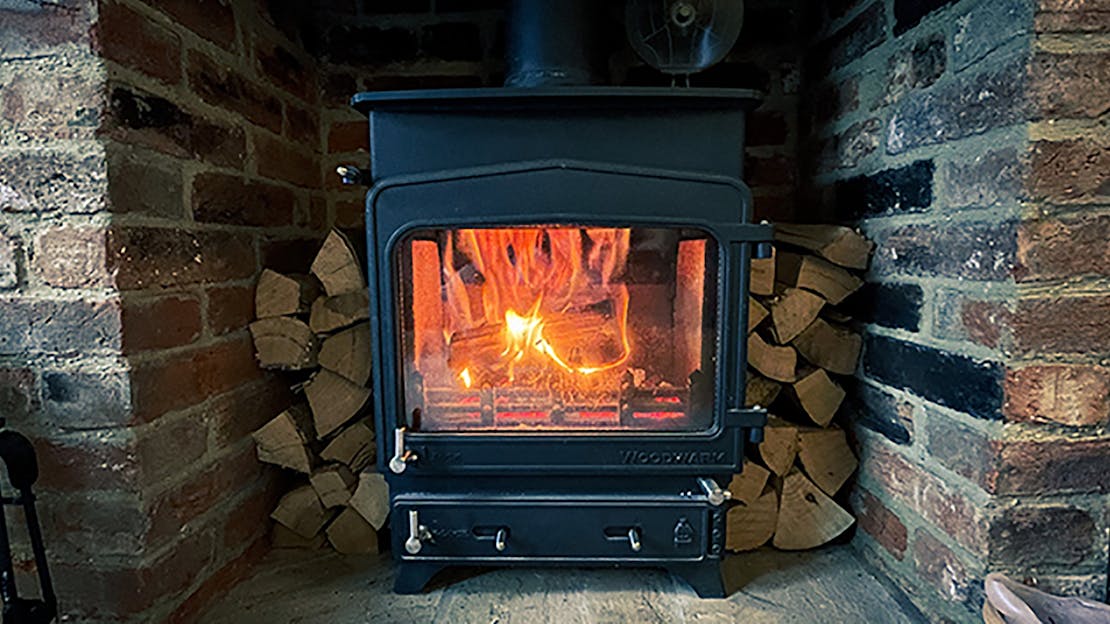
How to deep clean your fireplace
It is recommended you do a full clean of your fireplace every 50 or so fires to avoid any build-up of potentially flammable materials.
You will need:
Old clothes - you don't mind getting a bit dirty
Protective wear to avoid contact with eyes or inhalation
Dust sheets or cover
Newspaper (optional)
Rags /Cloths
Hard bristled brush
Dustpan & brush
Vacuum
Paper towels or dry towels
Cleaning products - your preference (both specified cleaners and at-home solutions will be referenced throughout the guide)
1. Inspect
Inspect your fireplaces for any damages first as these will need to be fixed, Fire Cement is a good temporary fix for smaller issues but we would still recommend getting damage professionally looked at to ensure safety.
2. Prep the surrounding area
Soot and dust can find itself getting everywhere even in places you would expect once it's been disturbed. Make sure any soft furnishings, carpets, and electronics are covered up to avoid any damage. Soot can stick to surfaces very easily and can be a pain to get off, leading to potential stains.
3. Sweep
Using a chimney brush will allow you to sweep the entrance to the chimney flue to make sure there's no debris blocking the lower part of the chimney. It's advised you get your fireplace professionally swept at least once a year, our guide on preparing your fireplace for winter is useful for advice regarding this.
4. Brushing
Using a dry hard bristled brush will help remove any leftover loose or built-up, hard-to-reach ash, dust, and soot after you've removed the ash dump if you have one.
5. Vacuum or Dustpan
Once all the build-up is loose using either the brush attachment on the vacuum cleaner or using a dustpan and brush remove it all. Removing as much as is possible before using any cleaning products will make the cleaning process easier as the ash won’t get smudged around with the cleaners.
6. Cleaning
Start off by using a mild cleaner to break down any dust or ash at first before moving on to anything tougher. The smoke produced by the fire in turn produces a greasy tar layer that builds upon the internal parts of the fireplace.
To begin breaking down this layer either a fireplace cleaner or a simple dish soap and water solution can help remove the film. Mix 1 cup of dish soap to 4 cups of hot water or apply your fireplace cleaner, using the same bristle brush as before, start working away at the internal surfaces.
For tougher patches, using 1 cup of bicarbonate soda or 1 cup of table salt mixed into 1 cup of dish soap to create a paste can break down harder to remove areas. Apply and leave to sit for a few minutes before scrubbing in circular motions with the bristle brush will add the abrasiveness needed.
The use of bicarbonate soda also helps to disinfect the area too.
7. Finishing touches
Using a clean, damp rag to wipe down and rinse away the cleaning products on the inside of the fireplace. If your fireplaces have a lot of buildup you may need to repeat step 6 once or twice more depending on the scale of build up.
To get your fireplace looking good use either a Stove Glass Cleaner or a solution of, half a cup of white vinegar mixed with half a cup of warm water, on the inside and outside of the glass doors to remove any soot build up.
If the soot is being tough here's a couple of tricks. Sprinkle a tiny amount of fire ashes on a damp cloth to act as an abrasive. If you’ve already chucked out the ashes then another trick is to use scrunched-up, old newspaper.
Wipe down with paper towels to avoid streaks.
Grate Polish can be used to add a nice finishing touch to the cleaning process to keep your fire looking tiptop condition.
Any scuffs or marks can be easily sorted by using an Ultra High Temperature Paint to cover them up. Normal paint cannot be used, it cannot withstand the heat.
Stone Sealer can be used on porous stone surfaces e.g. hearths and mantle pieces to protect against everyday drops and spills to keep it looking its best.
Hopefully this article has helped to tidy up your fireplace and gotten you ready for winter. Need more help? We have a wide range of expansive articles.
